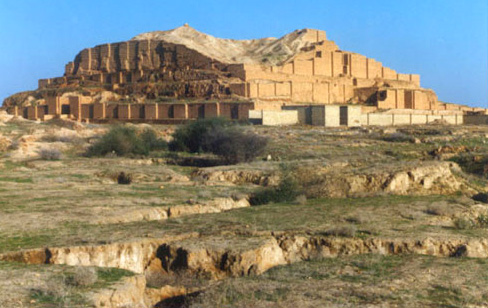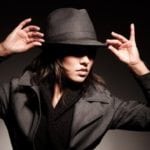 Miscellaneous
Miscellaneous  Miscellaneous
Miscellaneous  History
History 10 Huge Historical Events That Happened on Christmas Eve
 Music
Music 10 Surprising Origin Stories of Your Favorite Holiday Songs
 History
History 10 Less Than Jolly Events That Occurred on December 25
 Weird Stuff
Weird Stuff 10 Funny Ways That Researchers Overthink Christmas
 Politics
Politics 10 Political Scandals That Sent Crowds Into the Streets
 Weird Stuff
Weird Stuff Ten Bizarre Facts About The Doge Meme
 Our World
Our World 10 Ways Your Christmas Tree Is More Lit Than You Think
 Movies and TV
Movies and TV The 10 Coolest Stars to Set Sail on The Love Boat
 History
History 10 Things You Didn’t Know About the American National Anthem
 Miscellaneous
Miscellaneous Top 10 Things Crypto Was Supposed to Change & What Actually Did
 History
History 10 Huge Historical Events That Happened on Christmas Eve
 Music
Music 10 Surprising Origin Stories of Your Favorite Holiday Songs
Who's Behind Listverse?

Jamie Frater
Head Editor
Jamie founded Listverse due to an insatiable desire to share fascinating, obscure, and bizarre facts. He has been a guest speaker on numerous national radio and television stations and is a five time published author.
More About Us History
History 10 Less Than Jolly Events That Occurred on December 25
 Weird Stuff
Weird Stuff 10 Funny Ways That Researchers Overthink Christmas
 Politics
Politics 10 Political Scandals That Sent Crowds Into the Streets
 Weird Stuff
Weird Stuff Ten Bizarre Facts About The Doge Meme
 Our World
Our World 10 Ways Your Christmas Tree Is More Lit Than You Think
 Movies and TV
Movies and TV The 10 Coolest Stars to Set Sail on The Love Boat
 History
History 10 Things You Didn’t Know About the American National Anthem
10 Mistaken Origins Of Well-Known Things
There are many things in the world with origins that are unknown to us. We normally attribute the creation of a particular object to the country or culture it is best associated with, but this isn’t always necessarily correct. Obviously, the real answer becomes harder to detect when talking about truly ancient inventions, but it is very likely that none of the entries below have the origins you might expect.
10Haggis

There is no doubt that Scotland loves its haggis (a pudding made by stuffing various parts of a sheep into the sheep’s stomach). Most credit this love to Scotland’s national poet, Robert Burns, who exalted the virtues of the dish in his poem “Address to a Haggis.” Nowadays that passion has transformed haggis into a national dish and the main course during a traditional Burns supper. However, all of this does not change the fact that haggis wasn’t invented in Scotland.
It’s understandable why most people would assume that haggis is a Scottish dish, but the historical evidence to support this claim just isn’t there. Burns’ iconic poem came out in 1787. Before that, the earliest mention ever found of Scottish haggis dates back to 1747. However, at least one English cookbook makes mention of haggis way before that, in 1615. We can go even farther, all the way to 1430 and an English verse cookbook called Liber Cure Cocorum. It has a recipe for something called “hagese,” which talks of boiling and chopping a sheep’s heart and kidneys and mixing them with spices and other ingredients.
9The Archimedes Screw
No prizes for guessing who gets the credit for this invention. The ancient Greek scientist and inventor has many accolades to his name. Some people would also include the Archimedes screw, also known as a screwpump, a device that made use of two simple machines (the cylinder and the inclined plane) in order to move liquid. In the ancient world it was often used to irrigate fields or carry corn from one point to another. It was a basic design, but its simplicity and efficiency have ensured that even modern versions do not differ much from the original.
But while the Greeks can claim many technological breakthroughs during the Hellenistic period, the screwpump might not actually be one of them. There is strong evidence to suggest that a similar device, based on the same principles, was created by the Assyrians as much as 350 years earlier. One ancient Assyrian king, Sennacherib, described such a device being created to water his gardens.
Actually, those gardens are thought by some to be the same as the famous Hanging Gardens, which were never definitely established as actually being in Babylon. If this was true, it would certainly lend credence to the theory that the screwpump is not Greek in origin. The ancient historian Strabo also described the Hanging Gardens as being watered by screws. This makes it likely that Archimedes did not, in fact, invent the screw, but rather took the design and improved on it.
8The Bank Of England

Again, the name is pretty suggestive as to which nation was responsible for this particular institution, but actually the person who devised the plan for the Bank of England was Scottish. The end of the 17th century was a tough time for England. France had established its dominance on water and, although England became politically stable after William III took the throne, the country’s public finances were badly weakened. A new credit system was desperately needed to improve the financial strength of the new government.
Several plans were devised, but the one which would ultimately be adopted belonged to William Paterson, a Scottish banker and trader. He proposed to raise a loan of £1,200,000 to the government, which would see the subscribers being named as “Governor and Company of the Bank of England.”
The plan was a risky one, since the bank would basically be lending all of its money to a single entity (the English government). Nonetheless, it only took a few weeks in order to gather the capital. On July 27, 1694, the Royal Charter was sealed and the Bank of England began its life as the government’s debt manager—a role which it still plays today as the second oldest central bank in the world.
7Bowling

Bowling is a popular sport all over the world, but one which the English generally take credit for. It might be true that bowling has been played there for centuries and that they are responsible for the version which is most similar to the modern game—but the origins of the sport go back much further than that. In fact, the earliest version of bowling could date as far back as 3200 B.C. The grave of an Ancient Egyptian child who lived during that period was found to contain what appears to be crude bowling equipment.
Evidence shows that the Romans also had a primitive version of bowling. This involved throwing stone objects as close as possible to other stone objects. This version of the game grew in popularity and inspired the outdoor bowling game known as bocce, which is still played today.
6Pyramids

We all think we have a pretty good idea of what a pyramid looks like, despite the fact that most of those images would be wrong. This is mostly due to the Egyptian pyramids hogging all the fame, even though plenty of other examples of pyramids can be found in the Americas, China, Indonesia, and even Europe. Furthermore, the Great Pyramid of Giza often is claimed as the largest pyramid in the world, even though the honor actually goes to the Mayan Pyramid of Cholula (Giza is the tallest, though). And last, but not least, it is becoming more and more doubtful that the Egyptian pyramids were actually the first ones of their kind.
It is likely that, like many other things, pyramids were first built in Mesopotamia. After all, it’s not called the cradle of civilization for nothing. These constructions were called ziggurats and, although to us they would look quite different, from an architectural standpoint they are pyramids. The problem is that they didn’t survive as well as the pyramids, so we have no examples that definitively prove they were built earlier. However, we do have engravings of ziggurats on cylinder seals that can be dated as far back as the Early Dynastic period (around 3000 B.C.) and circumstantial evidence suggests their construction originated even farther back, during the Uruk period, long before the first Egyptian pyramids.
5Piñatas

The beloved piñata is a staple at almost any kind of Mexican celebration and is strongly associated with the country—but that’s not where its origins are. Actually, there is still ongoing debate regarding the exact birthplace of the party favor but, whatever the truth might be, the piñata is definitely not Mexican. At the very least, the piñata was brought over from Europe by the Spanish. At this point, the activity was not necessarily a game, but more of a religious tradition. The piñata was supposed to represent the devil: It was made pretty to symbolize temptation, and the participants were blindfolded as a way of symbolizing their faith.
But, as it turns out, the Spanish aren’t the inventors of the piñata either. In fact, they, like most of Europe, got the idea from the Italians—who supposedly got it from the Chinese. It would now appear that the piñata actually originated in China and European travelers brought it back home. Among those who discovered the piñata in China and took it back to Italy was one of the most famous explorers of all time: Marco Polo.
4Flying Saucers

Most of us are inclined to believe that the trend of reporting flying saucers is relatively recent and concentrated mostly in America. It is true that this is where the term “flying saucer” was first used. The first story about aliens to attract widespread media coverage was that of pilot Kenneth Arnold, who reported seeing multiple UFOs shaped like a saucer or a pie-plate. Despite Arnold never actually using the words “flying saucer,” that is the term the media latched onto when describing his story. Despite the sensation Arnold caused back then, nowadays he is mostly forgotten, his sighting quickly overshadowed by the Roswell incident.
But while the term might be new, the phenomenon is actually about 1,000 years old. That’s when the first mention of a similar mysterious flying machine occurs in a Japanese folktale called The Tale of the Bamboo Cutter. It tells the story of a beautiful woman who comes from the moon, although it’s not clear that it was ever considered anything more than a story. However, there are actual accounts of people claiming to see flying saucers all throughout the Middle Ages, and they are occasionally depicted in medieval artwork.
3Rickshaws

Rickshaws have been a common form of transportation in many Asian cities for over two centuries. However, despite this fact, their origin is still up in the air. The most commonly accepted explanation is that it was invented by three Japanese men, who applied and received permission from the government to make and sell rickshaws in 1870. However, there are several others who have a legitimate claim to be the inventor. Like many other entries on this list, it is impossible to know with certainty when the rickshaw was invented, but it is possible that the rickshaw was not invented by the Japanese, but rather by an American (sadly, his name wasn’t Rick Shaw).
According to the theory, the rickshaw was indeed created in Japan, but by an American missionary called Jonathan Goble (or possibly Jonathan Scobie), who was recorded to have petitioned the Japanese authorities for a share of the tax on the vehicles. Scobie gained considerable support from Tokyo’s European community for his claim to have invented the rickshaw, possibly for his invalid wife or at the request of a Japanese official. Moreover, the Burlington County Historical Society in New Jersey has in its collection a rickshaw which is supposedly an 1867 invention of carriage maker James Birch, thus predating the Japanese versions.
Even so, there is another claim which is even older—that of Massachusetts blacksmith Albert Tolman, who built what was described as a “man-drawn lorry” for missionaries traveling to South America. If he did actually invent the rickshaw, he would have done it in 1846.
2The Guillotine

Joseph-Ignace Guillotin gets the credit for this invention, even though the well-known design was actually created by Dr. Antoine Louis and built by German harpsichord-maker Tobias Schmidt. However, there were several other decapitation machines before the guillotine, which actually served as the basis for it—and they weren’t French.
The idea of a frame where a blade can be lifted, suspended, and released in order to behead a person was developed several times throughout history. The earliest source we have is a woodcut from a book published in 1577. There is no context for it—all we know is that it depicts the 1307 execution of an Irishman called Murcod Ballagh using a device very similar to the guillotine.
After this, we have the Halifax Gibbet. The Gibbet was almost identical to the guillotine, except that it didn’t use an angled blade, meaning that decapitation was not as fast or painless. Although formal records of people being executed using this method started in 1541, it is likely that the device was used long before that, perhaps as early as 1280. The Halifax Gibbet served as direct inspiration for the guillotine, but also for another decapitation device called the Scottish Maiden. It was first used in 1564, with the main difference being that the Maiden used a bigger, heavier blade.
1Bagpipes

If you were to picture the stereotypical Scotsman, you would likely imagine someone wearing a kilt and playing the bagpipes. This musical instrument is firmly associated with Scotland and there is good reason for that. The Scottish version of the instrument, known as the Great Highland bagpipe, is the most common one in the world. However, this doesn’t mean that the bagpipes were invented in Scotland—because they weren’t.
The well-known Highland bagpipes appeared sometime around the 15th century. It is thought that it might actually have been developed earlier than this, but there is no hard evidence to support the idea. However, all that is needed in order to determine that the bagpipes are older than that is to visit a few historical sites. Statues of people playing the bagpipes are quite common throughout Europe. For example, there is one at the Cistercian Monastery of Santes Creus which dates back to the 12th century.
There is evidence, though, that the bagpipe is a lot older than that, going all the way back to Roman times. The Emperor Nero is described by Suetonius as a bagpipe player. Another text describes an unnamed emperor (possibly also Nero) who played “the pipe, both by means of his lips and by tucking a skin beneath his armpits.”
Radu is a freelance writer who spends his time writing about all things weird, mysterious or just plain wacky. Contact him at [email protected] or say hi on Twitter.








